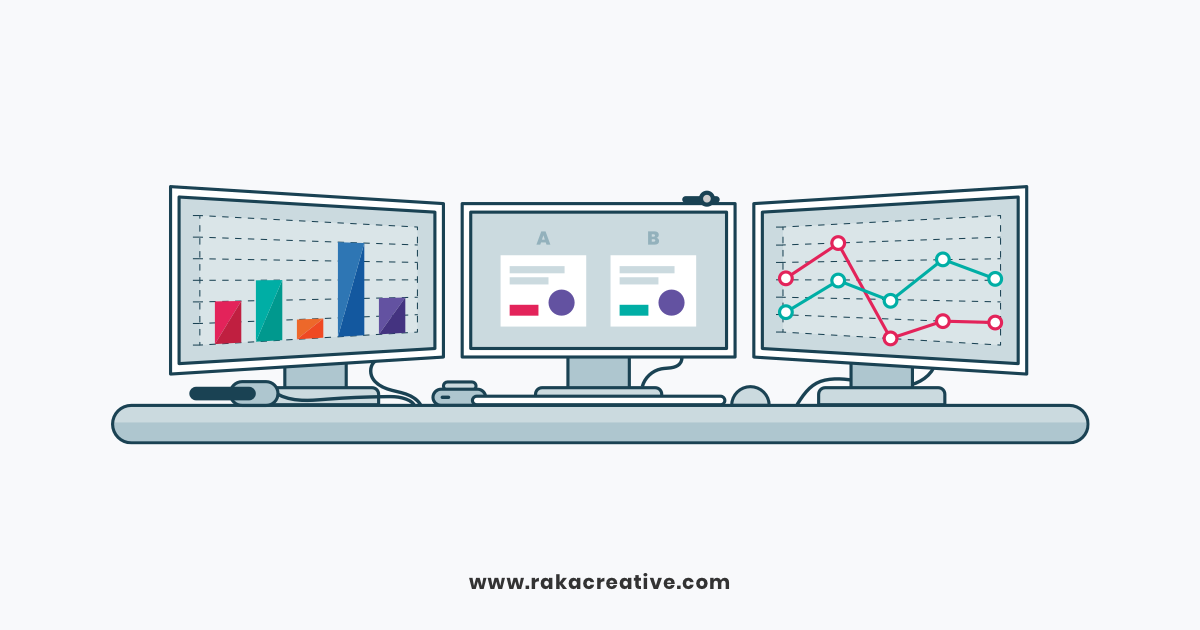If you’re getting planning your digital marketing budget, you’re faced with a lot of decisions: how much should you budget for advertising, how to funnel leads to your sales team, what metrics to report on, and the list goes on and on. One of the simplest questions—and one that marketers new to the digital advertising game often overlook—is also one of the most important: should you focus on search or display ads?
Search or display? Which is better for my brand?
The answer, of course, is both. Search ads are great at closing prospects, but they can’t do it on their own. Display ads can do a masterful job of reinforcing what search ads promote. Regardless of whether you’re new to the digital ad game or an experienced ad master/tsar/doggo, it’s imperative to remember that the key to success in advertising (as in life) is balance.
(“A blog post about balance,” you’re thinking to yourself, “where have I seen one of those before?”)
The thing is, marketers often focus on how display ads can bolster the performance of search ads, and too often they forget that the converse is also true. Display ads are responsible for creating valuable brand impressions that help to drive more searches, but there’s no better place to test messaging than in search advertising. That’s because you’re controlling for only one variable: messaging.
Here’s what to do
When you’re planning your digital advertising budget, plan to allocate all of it to search for the first three months. It’s easier to launch a search campaign than a display campaign anyway because there are fewer variables involved.
Month one
Run only search ads so that you can determine which messaging gets the best reception. It’s best to have three to five ads per ad group, so if you’re starting from scratch, you may want to keep it to two or three ad groups so that you can monitor and test more effectively. You may also want to mix and match headlines and descriptions here so that you can get a feel for which headline and which description text are the top performers.
An important note: this isn’t a best practice generally, but for the purposes of testing, you’ll want to keep budget even across all campaigns for this first month so that the data isn’t skewed by changes in spending.
Month two
Pause the underperforming ads and write new ads that incorporate the messages from the high performers. Don’t be afraid to adjust budgets to fund more highly-performing campaigns during this month, because you’re now reaching a point where you’ll want to be driving results while you test.
Month three
Keep all ads from month two in rotation and include sitelinks to point to popular products or services,¹ callouts, and structured snippets² alongside them to see which pages and selling points perform the best.
After three months
You’ll have a really solid baseline in regard to the top-performing messaging (headlines/descriptions), products/services (sitelinks and structured snippets), and promotional language (callouts), and you’ll have a good handle on what copy should use in your display creatives to control for creative performance.
For the next three months, you should take the advertising budget that we discussed above and allocate between 30 and 40 percent of it to display, and the balance to search. Continue to test search using the tests that are most appropriate to your brand, industry, offerings, and needs, and generate some display creative to begin testing.
If three to five search ads per ad group are best, then two to four display creatives should do the trick, but make sure that you cover each of the sizes (if you can’t do each of them, focus on the ones in bold, as they’re the most popular sizes):
- Leaderboard (728×90)
- Banner (468×60)
- Half banner (234×60)
- Button (125×125)
- Skyscraper (120×600)
- Wide skyscraper (160×600)
- Small rectangle (180×150)
- Vertical banner (120 x 240)
- Small square (200×200)
- Square (250×250)
- Medium rectangle (300×250)
- Large rectangle (336×280)
- Half page (300×600)
- Portrait (300×1050)
- Mobile banner (320×50)
- Large leaderboard (970×90)
- Billboard (970×250)
Similar to the above, during month one of the display test, keep budgets across all campaigns consistent. In month two, turn off the two or three lowest-performing creatives and feel free to adjust budgets to aid in performance. And in month three, continue to toggle under-performing ads and budgets, and also pay some extra attention to the placements and targeting.
Now what?
Once you’re through this second three-month test, you should have a pretty good handle on how your messaging resonates with your audience, and you may want to expand into other channels (Facebook and Instagram are the natural next step once a display ad test is completed). It’s important to ensure that your budget can accommodate this, as social display channels make it as easy to drive awareness and leads/sales as they make it to spend money.
You may also find that you’re really happy with the growth from search and standard display and want to stay the course for a while longer, which is perfectly okay, too—there are lots of other tests and best practices to apply to search and standard display ads that can help you increase market share, drive more leads and learn more about your messaging.
If, after reading through all of this, you’re more confused than you were when you started, give us a call. We’ve been building and testing ad campaigns for years and would be happy to give you pointers, learn some more about your brand and industry, and help guide you down the road to digital advertising success!
- Don’t hesitate to use sitelinks for careers, contact, or other pages if there’s a business case for doing so.
- We’re not recommending ONLY using these three ad extensions; use Location, Message, Call, Review or any other ad extension that you desire. These are just the best for initial testing.






